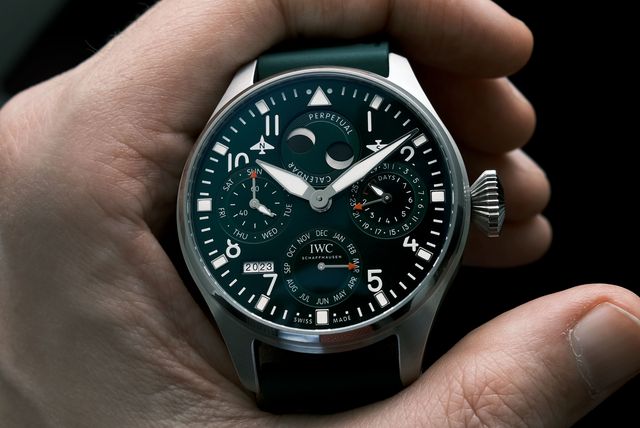If you glance at your watch on July 1st and find that its calendar reads "31," you can thank the Romans. In the earliest days of their (now) fallen empire, their calendar followed a fairly simple lunar cycle with an arbitrarily set 10 months. When Roman astronomers proposed a more accurate solar calendar with 12 months, the two new ones were named to honor the Caesar dynasty, Augustus and Julius, and immediately rendered September (meaning “seventh”) through December (“tenth”) misnamed. Naturally, these new Caesarian months had to have the most days (31), and so did October (for Caesar Octavius).
So while the calendar approximated the sun’s travel across the sky, these imperially decreed longer months would forever become the bane of future watchmakers: a simple watch with a date function is not smart enough to distinguish months with 30 days from those with 31. And that’s not even to mention the problem of February.
The concept of the leap year was also the result of a decree, though religious instead of political. Pope Gregory wanted to ensure that Easter fell as close as possible to the spring equinox every year, so he declared that every fourth February will get an extra day to keep the calendar synchronized to the seasons. This so-called “Gregorian” calendar compensates for the fact that our 365-day year is six hours shorter than a true solar year and so “resets” it every four years. As if the Romans’ narcissistic calendar weren’t enough to have to deal with, the Gregorian one added even more complexity for future horologists.
How the calendar's quirks translate into mechanical clockwork
The most elemental form of calendar complication is found in a watch with a date function, which dutifully marches off 31 24-hour cycles before starting all over again thanks to its system of gears that are toothed to coincide with most months. Simply displayed on a rotating disc beneath the dial and highlighted through a window, this is such a common calendar function on watches as to often be taken for granted. The addition of another disc counting off the days of the week is also popular and simple enough to hardly be considered a complication.
But with the addition of a set of gears and discs driven off the going train of the movement, the possibilities grow, and in the 1800s, complete, annual and perpetual calendar watches became popular not only for their usefulness but also for their complexity. These watches add the day of the week and the month and, in their most complicated form, the leap year cycle, allowing the watch to correct itself for not only short months but also for those years that Pope Gregory wanted to be a day longer.
Different types of calendar watches track different amounts of information
Calendar watches can be divided up into three categories of increasing complexity. A complete calendar, sometimes called a “full calendar,” is a watch that displays the day of the week, the date, the month of the year and, of course, the time. Often these watches also show the phase of the moon — just for the hell of it (and because it seems to fit, thematically).
Consider the complete calendar an entry point or a gateway watch to high complications. They are often classically elegant and useful but more affordable than their more elevated cousins since they have less going on under the hood. With a complete calendar watch, you must still advance the date on those months that have less than 31 days, usually with a small button on the side of the case.
A step up from the complete calendar brings much greater complexity and functionality, and an accordingly higher price. An annual calendar watch has the same display as a complete calendar but is “smarter” in that it compensates for the short months of the year, besides pesky February, by advancing accordingly. An annual calendar has got you covered for 11 of the 12 months of the year and three out of every four years; as long as you keep it wound, you won’t have to touch it to correct the date from March through January.
The revered perpetual calendar
At the top of the pyramid, not only for calendar watches, but for any kind of watch, is the vaunted perpetual calendar. In the watchmaking pantheon, the perpetual calendar is one of the most prized feats of horology, revered by collectors and coveted by enthusiasts.
The perpetual calendar is, as its name suggests, self-sufficient in its date calculations, even in leap years, thanks to a “mechanical memory” of 1,461 days. Set it and forget it — just be sure to keep it wound, or there’s a considerable amount of setup you’ll have to do to get it back in sync. Perpetual calendars maintain the classic layout of the other calendar watches, with day, date, month, time and often moonphase displays, but they usually add an indication of the current position in the four-year leap year cycle as well.
There is one calendar anomaly that will foil even the mightiest perpetual calendar watch, and again those pesky Romans are to blame. The year 2100 will not be a leap year, despite what you'd expect. This is due to a quirk of Pope Gregory’s ancient calendar, which says that three century years out of four are not to be leap years (2000 was, and 2400 will be, but not 1900, 2200 or 2300 either). If you’re lucky enough to own a perpetual calendar model, leave your grandchildren a note.





















